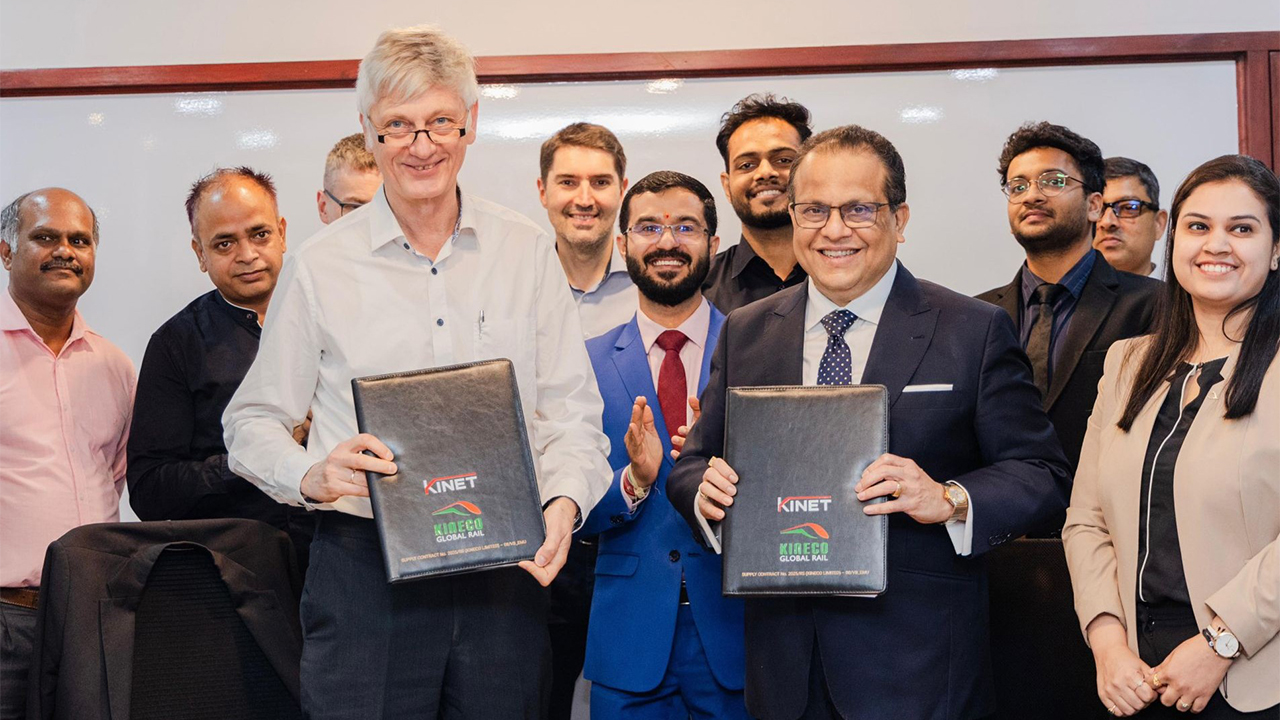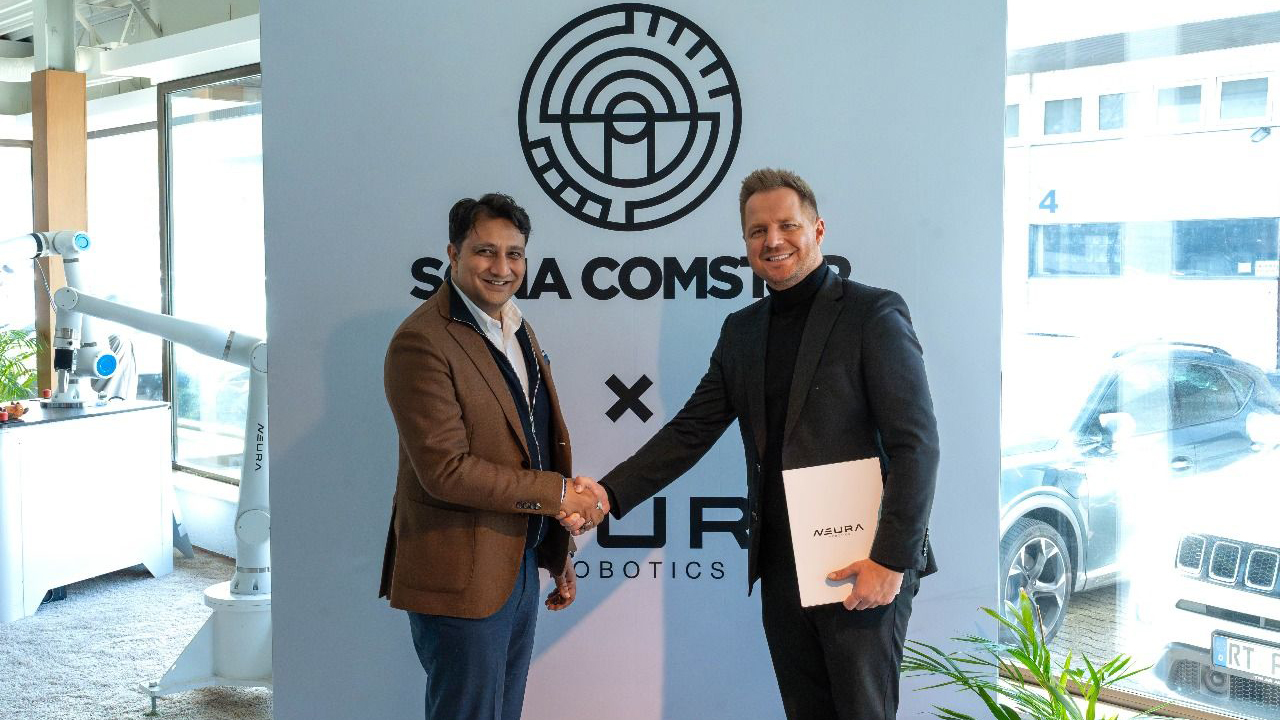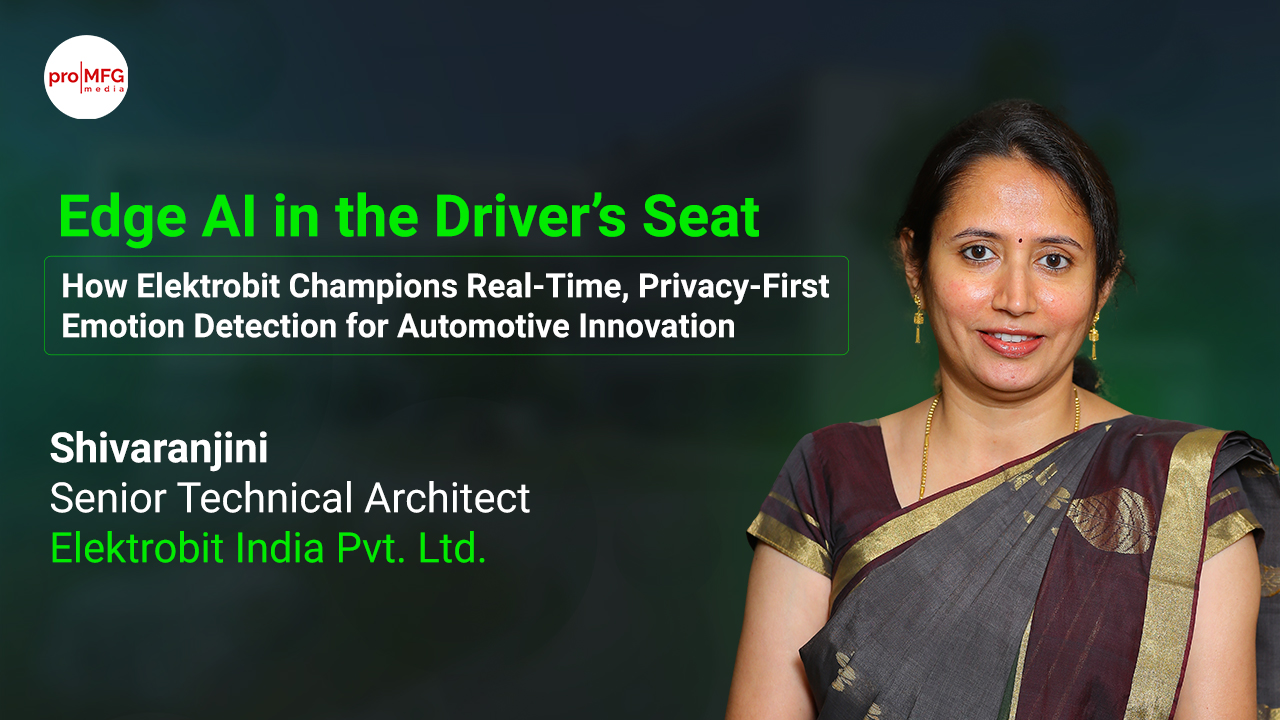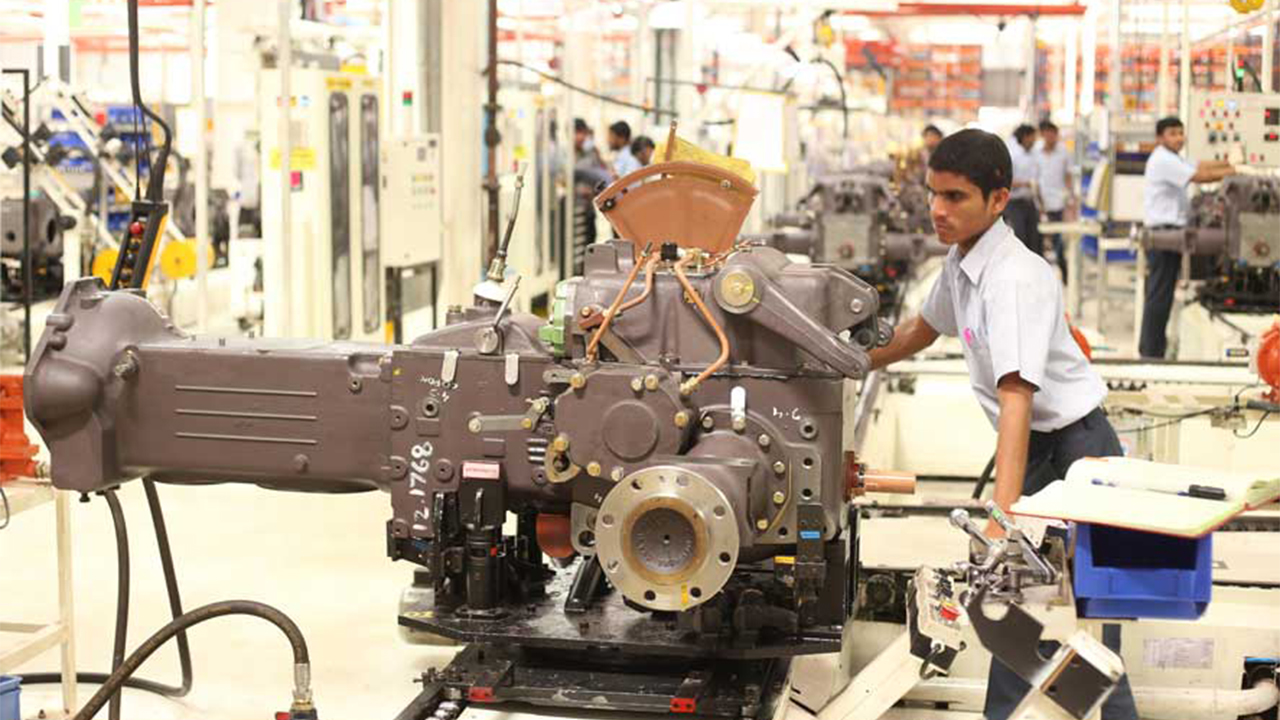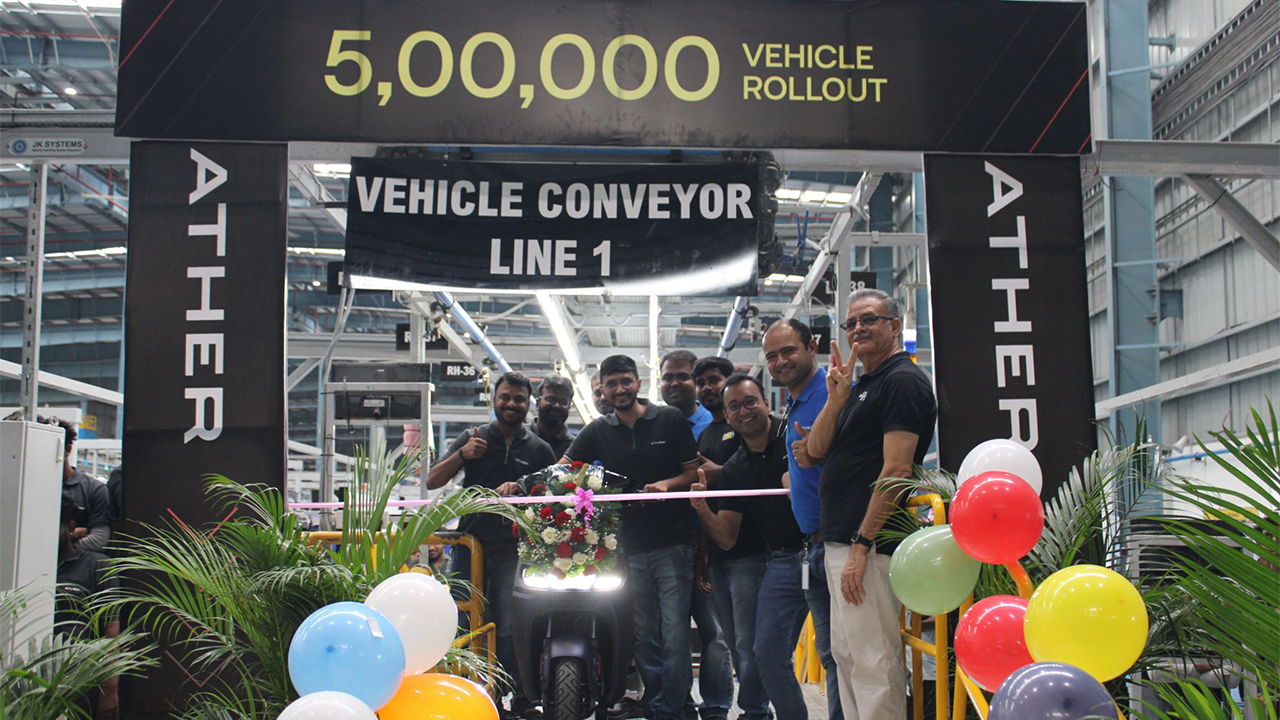“Technology is no longer just an enabler. I think technology leadership is essential for market leadership. And companies that are going to attain leadership in technology are going to win in the market.”
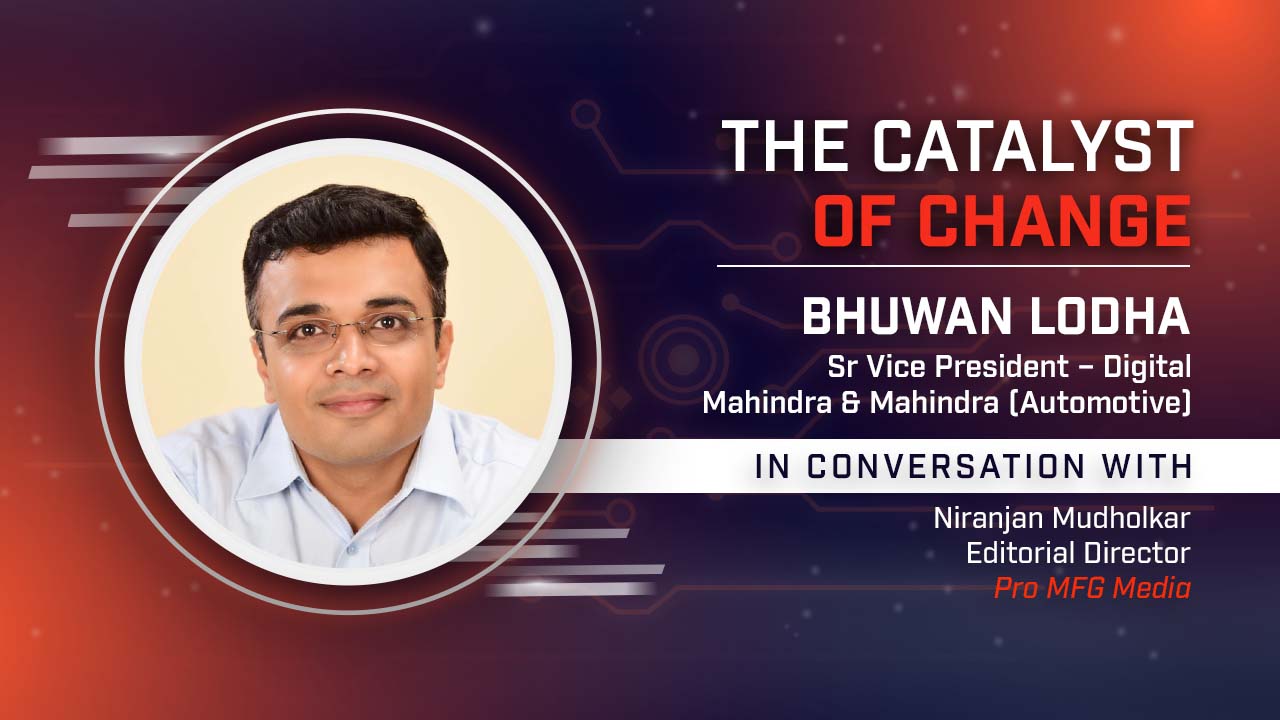
November 2023 : In this exclusive interaction with Niranjan Mudholkar, Editorial Director, Pro MFG Media, Bhuwan Lodha, Sr Vice President - Digital, Mahindra & Mahindra (Automotive) underlines the significance of digitalization when he says that ‘digitalization is increasingly creating a point of differentiation for organizations. The company that is going to win in the market – be it a bank, be it a pharma company, be it a telecom company, or be it an automotive company, must be the best technology company in its sector.’
The automotive industry is undergoing a paradigm shift in terms of technological advancements and disruptions. In this scenario, what is Mahindra & Mahindra (Automotive) on the digitalization front to stay relevant, competitive, and successful?
Yes, you are right. The automotive sector is going through significant tectonic shifts in terms of technology and the way the industry is evolving.
- The product is changing. We are moving from predominantly ICE vehicles to electric vehicles.
- The supply chains are shifting. With the growing focus on ‘Make in India’, there is a lot of thrust on locally sourced components. At the same time, with the emergence of electric mobility, software is becoming more important. And as a result, a lot of tie-ups are happening.
- Finally, and most importantly, customer expectations are changing.
All of these changes bring about a significant need for technology to be deployed at every touchpoint - all the way from lead to loyalty and everything in the middle - which involves how we serve our customers, how we manufacture our vehicles, how we manage our supply chains, how we interact with our suppliers and our dealers, how we run our production planning, how we run our internal controls, and so on.
And hence technology is being deployed as a catalyst of change across the value chain. We are seeing significant investment in technology. Few years back, M&M created the Automotive Digital Centre (ADC), which I am leading currently. This Centre is responsible for driving the digital agenda across the business functions. At ADC, we have three key verticals. The first one caters to customer and dealer experience, where we build and deploy technologies that help our customers (and dealers) experience our products and services. The second pillar is about operations. This includes our manufacturing systems, quality systems, supply chain systems, planning systems and so on. We are regularly overhauling, modernizing and upgrading them. And then the third pillar is about product development technologies. This includes our Product Lifecycle Management (PLM) systems, design systems, simulation systems and so on.
Transformation in all these three areas is ongoing, from customer service to operations to the way we run our product programmes. All these are being constantly simplified and accentuated with technology. I think over the next several years, technology will play a pivotal role in the way the automotive industry gets transformed and will become a key lever for OEMs to rise and meet customer expectations of the future!
In the industrial domain, digitalization ultimately leads to smart manufacturing. What are the key challenges in implementing the same and how can automotive companies overcome them?
I think digitalization is increasingly creating a point of differentiation for organizations. The company that is going to win in the market – be it a bank, be it a pharma company, be it a telecom company, or an automotive company, it must be the best technology company in its sector! And hence, it is unfair to call technology just a tool. I think technology leadership is essential for market leadership. And companies that are going to attain leadership in technology are going to win in the market.
Of course, there are challenges in making this happen. Like any other transformation, technology led transformation also has its own issues. But let me count a few that I’ve seen so far.
The first is about building on top of legacy. At a company like ours, especially an automotive company, which has been there for decades, we have systems running in different parts of the company, which were established in different times. Those systems were the right choice at that point in time but have lived their age and now have to be evolved with modern technologies. Today’s world and today’s market require a much more agile and much more adaptive type of processes inside the company and the way we work with our customers. As a result, the transformation of technology is also becoming a transformation of people. At Mahindra, we are fortunate in that the leadership is very progressive and perhaps that is the reason we are much ahead than many others that I’ve seen.
The second challenge that I wanted to include was about the availability of talent. India is a technology talent hub. Of course, everybody knows we are one of the biggest providers of tech talent to the world. We house the biggest IT services companies within the country, and we have the best engineers coming from India. But at the same time, it is challenging for legacy companies to attract this top talent, especially when it comes to software and digital. We have taken multiple steps for Mahindra to become a brand of choice for top software giants to come and join us. We recruit from top business schools and from top technology schools as well.
And we fill our leadership funnel bottom up. But at the same time, I think, not just for the Mahindra Group but for the manufacturing sector and the automotive industry in general, the problem of being branded as a legacy company and not a technology company persists. There is this gap when it comes to the perception of the brand. But it is getting narrowed as we speak.
Today, a lot of people that we have hired in the Auto Digital Centre at M&M come from marquee tech brands. They are now thriving here, realizing that they get to do new things here and they get to become the future of the entire industry, and in some way, they are taking part in the transformation of the country!
Can you share a couple of remarkable examples of how M&M (Automotive) is using digitalization to achieve its business goals?
We cannot wait for customers to walk into our showrooms, instead we try and meet them where they are! We set out on the journey to build an omni channel experience for our potential and existing customers. For example, irrespective of whether you are on Instagram, you are on a website, you are on WhatsApp, you are talking to a call centre agent, or you are standing in a Mahindra dealership – if you want a test drive, you can book a test drive across all of these platforms. All these channels now feed into one single scheduler system that a dealer, who is near to you gets access to and can fulfil. As of now, we have the first OEM in India, who has this true omni-channel test drive booking experience. Of course, a test drive is just one example; there are so many touch points that we have with our customers, and we are making everything omni-channel.
For the second example, let’s go to the backend of the business - our manufacturing plants. Paint shop in the automotive value chain is one of the most critical and resource consuming parts, and it is a very high precision activity. Being able to detect defects in the vehicle body after it is painted is very critical for the quality of the product. Being able to deliver first-time right on paint quality requires a significant amount of planning and investment. Our latest paint shops are fully automated with high-end robots painting each vehicle with surgical precision.
Yet, defects can show up because of some non-controllable factors. Now we are investing in high end deflectometry based imaging solutions coupled with AI algorithms to detect these errors that may go undetected with the human eye.
It has done two things; it has brought up our accuracy of detecting errors right at the paint shop before it goes out by a significant amount and it has reduced the time it takes to QC every model from anywhere between two to three minutes down to 20 seconds.
About a year back when the Mahindra India Design Studio won the ‘Best Design Project’ for the new Mahindra ScorpioN, M&M’s Chief Design Officer Pratap Bose had said that good design equals good business. You have seconded that perspective. How do you look at that statement in the context of digitalization?
I think design, in some ways, is the first brand experience everybody has - be it with a vehicle or with an app or with a website. Typically, India has not been seen as a market where good design is truly appreciated and valued. But I think over time, we have come to a point where Indian customers are willing to engage more with digital properties where the design is more thoughtful, and the user experience is more friendly. That is true for our external customers as well as our internal customers. Our teams have spent a lot of time working with dealers in trying to understand the requirements for usability of the app that our sales consultants use as their primary work tool. We have made a significant upgrade redesigning the app to make it easier, faster, and pleasing to use. And now they are spending less and less time on the screen, and more and more time speaking to customers.
I think it is quite clear that if you invest in good design, you will be able to impact business parameters. So yes, Pratap’s quote is quite profound - good design is good business.
What are the advantages of leveraging cloud platforms in the context of automotive manufacturing?
We are resolved to become a Cloud First company. We still run a lot of our payloads on-prem in our data centres, for the right reasons of course. With everything new that we do, the decision is to evaluate ‘cloud first’.
How do you tackle the cyber security aspect there?
At all our plants, we have now segregated IT-OT networks, air gapped them, and have put in the right controls. We have recently set up a SOC server room where teams manage and monitor any breach or any symptom that could lead to breach later.
NEWSLETTER
TRENDING ON PRO MFG
MORE FROM THE SECTION




